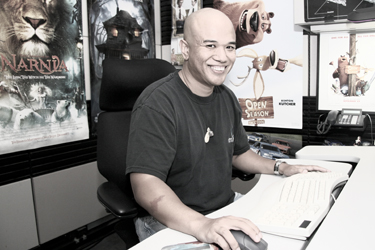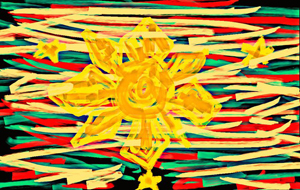DAVAO CITY (MindaNews/11 July) – Around this time last year, in a conversation with then Davao Archbishop Fernando Capalla, I asked him what “secularistic” meant. He answered that it roughly translated to “worldly,” from the Latin word speculum. “Secular, materialism, consumerism are all the same. Take art, fine arts. Even in schools, our culture prepares people only for business and development,” he intoned.
 “And to go abroad,” I asked tentatively. “And to go abroad,” he concurred, adding that “arts and writing, and music, the need of the human being is not just money and food. People live by the word, by values, music. But the culture now is not like that.”
“And to go abroad,” I asked tentatively. “And to go abroad,” he concurred, adding that “arts and writing, and music, the need of the human being is not just money and food. People live by the word, by values, music. But the culture now is not like that.”
There may be much to say about the benefits of industry and technology, and indeed society has reaped its own share of the good life. Yet Capalla had rekindled a spirit I had harbored for decades, one that awakens again and again in the company of artists and musicians, the last one being the sight of a person named John Butiu talking about his art.
“It’s a lot of fun,” he quips.
But that’s getting ahead of our story.
I first heard about John when my wife Neng and I were starting out in Manila. Actually, it was more about his mother, Aurie, Neng’s maternal aunt, who was the subject of many a tale within the family. Auntie Aurie succumbed to cancer in 1991 after eight long years wrestling with it. Each time I listened to the testimonies, they were fraught with pain and submission, of faith and personal valor. At 46, her death lingered on in the next generation, a reminder of the fleetingness of youth, particularly among Neng’s maternal relatives whose elders were all from Luzon but who eventually settled in Mindanao.
That last one is significant, if for nothing else than the fact that the migrant Castillos, starting with the matriarch, Lola Sion, were noted for their exuberance.
Never have I heard of anyone as indigenously talented as Neng’s grandmother, who was unschooled but street smart, old but forever young. At the time I was seeing her in the mid-Eighties at their old porch, she was half blind and hard of hearing, but her green jokes always brought the house down. Lola Sion may have eked out a living peddling fruits and vegetables at the market, but she painted landscapes on canvas, composed little ditties for her apos, and had a culinary skill that was widely regarded, if not loved, as an art.
Of course, it bears mentioning that her husband, Lolo Simon (pronounced with a short ‘i’), played the saxophone in a band.
 It was the old-timer Simon’s chromosomes that surely must have caused the melodic genes to propagate, if most of his grand- and great-grandchildren’s passions are anything to go by. Starting with my own son, Kevin, I was on the verge of a make-or-break effort to prod him into law school after finishing communication arts this year. But Neng had prevailed upon me to reconsider his inclination to music, and at some point I was beginning to feel like Michael Corleone staring down his son Anthony’s dreams of becoming a tenor. And so, as fate would now have it, Kevin gushes about solfeggio and music listening, about having a soprano as a professor and a renowned conductor as a one-on-one mentor at the UST Conservatory of Music, where he majors in conducting.
It was the old-timer Simon’s chromosomes that surely must have caused the melodic genes to propagate, if most of his grand- and great-grandchildren’s passions are anything to go by. Starting with my own son, Kevin, I was on the verge of a make-or-break effort to prod him into law school after finishing communication arts this year. But Neng had prevailed upon me to reconsider his inclination to music, and at some point I was beginning to feel like Michael Corleone staring down his son Anthony’s dreams of becoming a tenor. And so, as fate would now have it, Kevin gushes about solfeggio and music listening, about having a soprano as a professor and a renowned conductor as a one-on-one mentor at the UST Conservatory of Music, where he majors in conducting.
Now, if there’s any drift in this narrative, it’s that one or two people do not an orchestra make. Across the Castillo lineage, someone somewhere is either singing or toting an instrument. Most of Neng’s family members are no strangers to the piano. And among many of her nieces and nephews, Jude plays the oboe in the school’s symphonic band. Rachel performs piano recitals. Andrea has an operatic voice. Jamie is in the choir. And Arantxa plays the base. Most of the rest are either strumming a guitar, picking up a clarinet, pounding the drums, and yes, blowing on the saxophone.
If they’re not into music, they’re into something else, which is usually the graphic arts. Kiko, my quiet and reflective youngest, has earned family accolades for his eclectic designs. Our daughter Kai has gifted friends and relatives with her endearing cards and collages. Neng’s sister Vengie, a pediatrician, once took up art as a hobby, and pledges to “paint again when I retire.” Unspoken tributes to the immortal artist in Lola Sion, these likely are, which brings me back to John Butiu who, for all the success he’s had, retains the small-town wonder of a boy who enjoys what he’s doing.
I caught him in an online segment of an interview in June, when television host Luisa Marshall featured a book by FilAm journalist Ruben Nepales. The latter had honored Filipino talents in the U.S. entertainment scene, and John, an animator, was one of them.
“What’s your best work,” asked Marshall. Apparently not given to boastfulness, John hesitantly mentioned Cloudy with a Chance of Meatballs, a 2009 film that earned $243 million worldwide, and admitted he was collaborating with the artists and designers of the sequel “to create environments and characters.”
Marshall was cheerily egging him on, and it took awhile before John ticked off The Lord of the Rings, Chronicles of Narnia, Harry Potter, and Superman Returns, among other blockbusters. He said that working with acclaimed director Peter Jackson (who produced, among others, The Lord of the Rings trilogy, The Adventures of Tintin, and The Hobbit: An Unexpected Journey) was one of his memorable experiences.
 “It was a lot of fun,” he finally enthused. “People were great and wonderful to work with… amazing talent, and just seeing and bumping into the actors who were actually in the film. I was kind of star-struck, but at the same time having fun creating and working on these movies.”
“It was a lot of fun,” he finally enthused. “People were great and wonderful to work with… amazing talent, and just seeing and bumping into the actors who were actually in the film. I was kind of star-struck, but at the same time having fun creating and working on these movies.”
When Marshall asked where he got his inspiration, I thought it was rather trite. But John, being obviously less jaded than I was, revealed that watching Blade Runner, the Star Wars Trilogy, and other science fiction classics set it all off for him. He did attend some formal art sessions and began designing cars. But before long he ventured on his own and worked his tail off to learn more about animation and computers because “I wanted to do things other than just cars. I wanted to be part of the creative process of movies and special effects.” (Which was just as well, I surmised, for someone who’s long been a movie fan, and whose sister Melody sings and acts on stage and film.)
At the end of it, he glanced into the camera, thanked the opportunity to have been honored by Nepales, and said that—although his words almost drowned in the din of revelry—he hoped to “be an inspiration to other people.”
I was watching him on my computer’s small screen, a young man who made his living doing what he’d set out to do, holding his own amid the chatter of a Hollywood function, yet a bit averse to publicity. His mother, Aurie, would have worshiped the sight of this modest achiever, a dreamer who may have long gone abroad but who, out of the richness of the family tapestry, remains truly one of us.
John has traded the secularistic for the sublime, and Capalla couldn’t have agreed more.
